Home / Arts / Advertising / Cinderella / Dance / Fabergé / Giselle / Imagery / Iconography / Lalique / Marmite / Theatre / Tribute
My two favourite Faberge images!
2015 - Faberge Revived
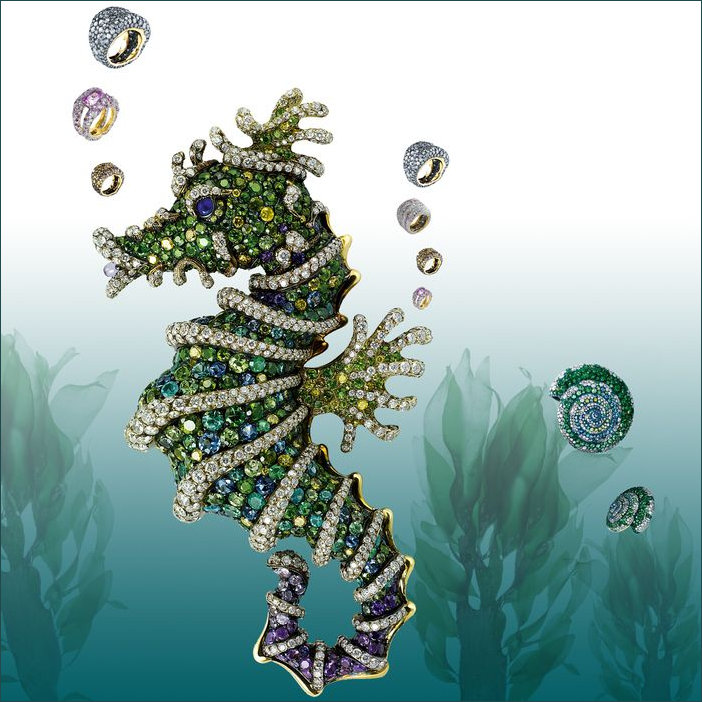
The Sadko Seahorse Brooch is one of the highlights of the new collection - image © EPA
Sadko Sea Horse Brooch
"Recalling the magical Kingdom of the Blue Seas in the famous Russian fable of Sadko, the Bard, this charismatic, enigmatic sea horse is encrusted with sea-coloured gems, alexandrites, green demantoid garnets, paraiba tourmalines, tsavorites, shaded with violet sapphires, yellow and violet diamonds, wrapped in white diamond seaweed. The sculptural, narrative brooch demonstrates the dedication to perfection characteristic of the finest high jewellery, the back of the jewel as impeccably detailed as the front."
1898 - The Lily of the Valley Egg
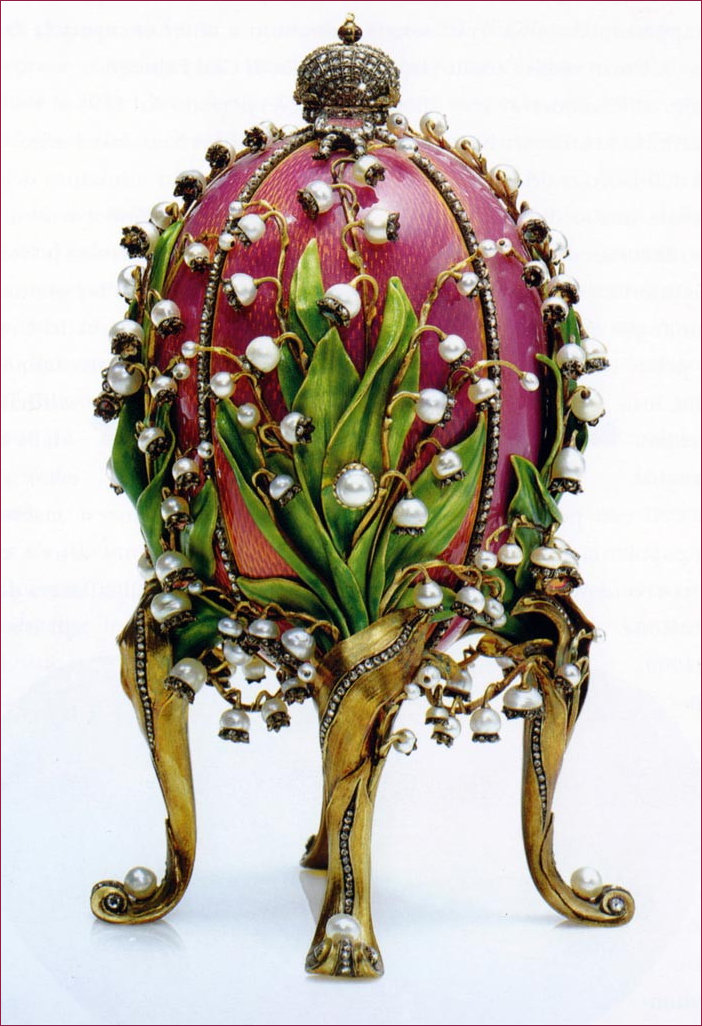
Internet image - no visible © origins
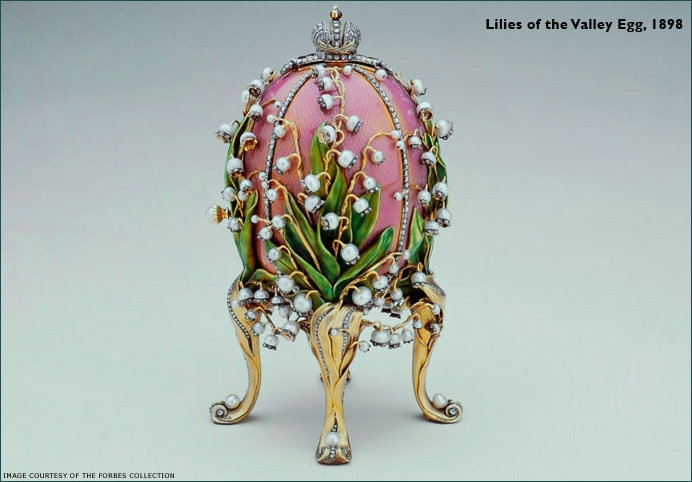
This image image and © of The Forbes Collection
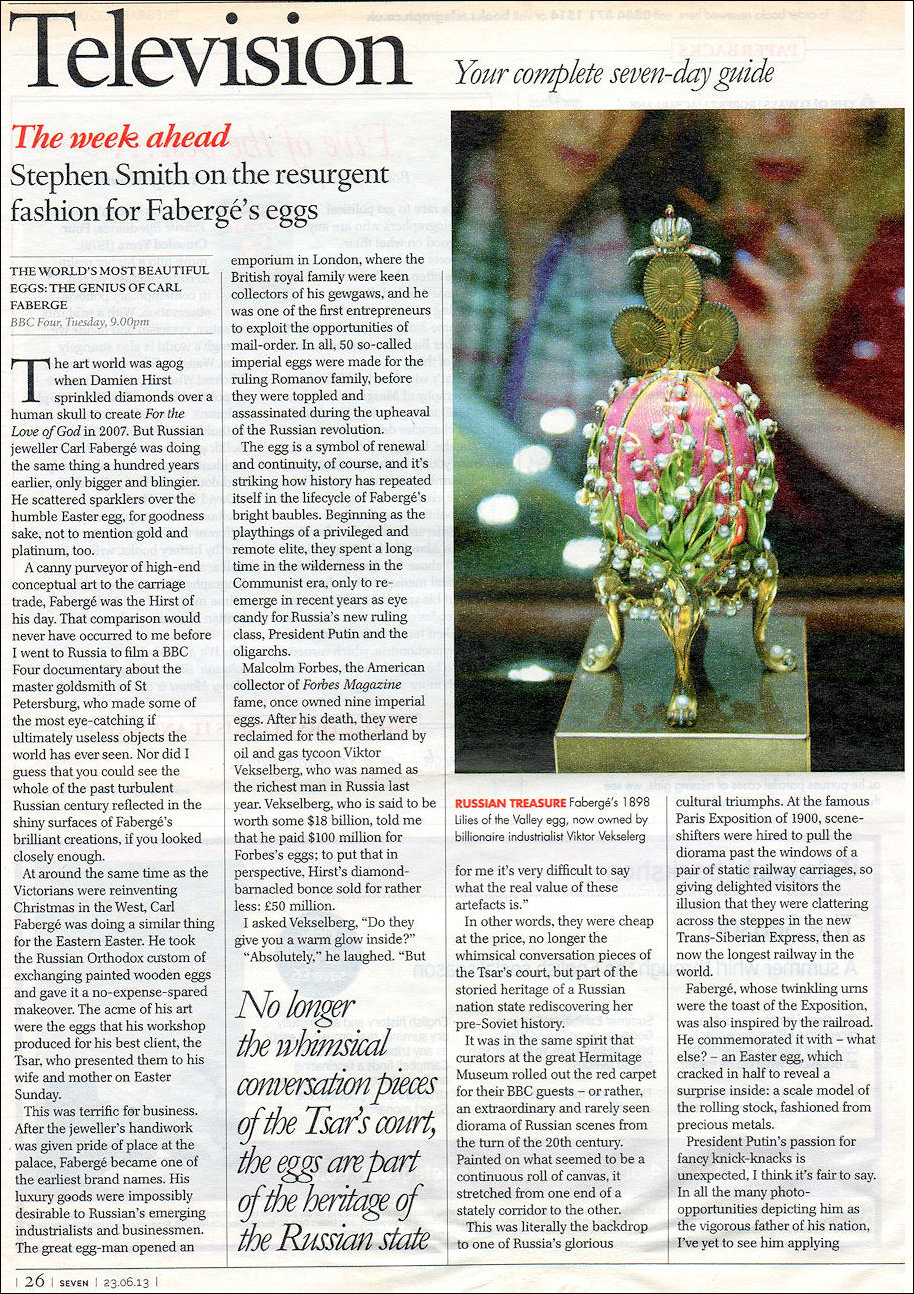
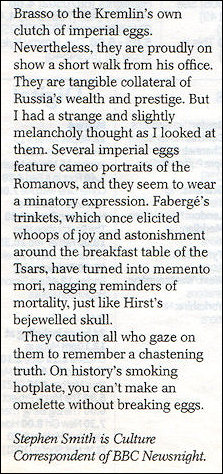
1913 - The Fabergé Winter Egg
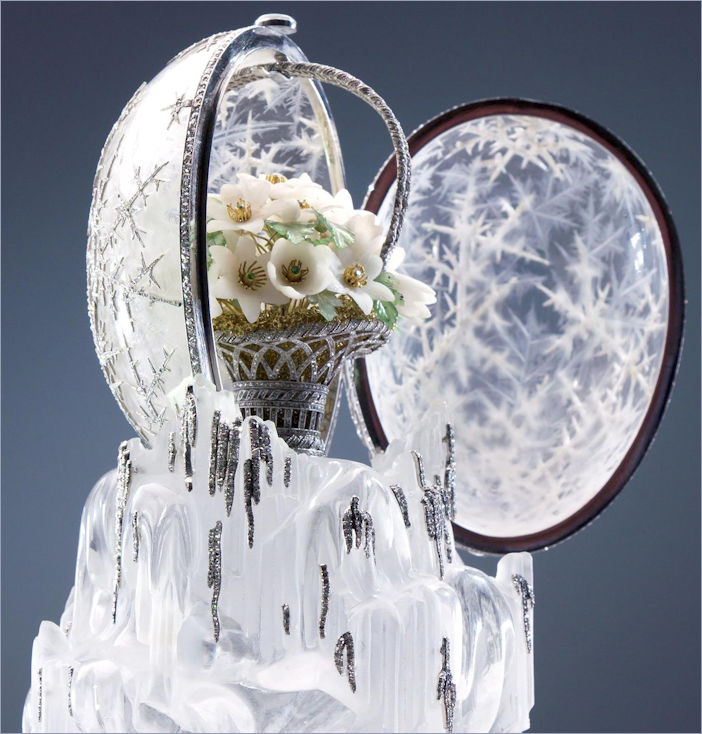
The famous 1913 Fabergé Winter Egg is considered to be the greatest of the 50 glittering Easter eggs created for the Russian royal family. Image sourced from and courtesy of The Jewellery Editor
Better than chocolate: Fabergé's Imperial Easter Eggs
Easter is the time for eggs and no one has made any more beautiful than Fabergé, the legendary Russian jeweller.
18th April, 2019 by MARIA DOULTON
Carl Fabergé created only 50 lavishly decorated eggs that the Russian Royal family gave as extravagant Easter gifts. The eggs carried both the Christian symbolism associated with Easter and re-birth as well as romantic messages of love. The bejewelled eggs that Fabergé created for the Russian royalty are called the 'Imperial' eggs and were gifts to wives and mothers full of romantic and religious symbolism. Fabergé also made eggs for other wealthy clients but these are not included in the 'Imperial' category.
The first Imperial Fabergé Egg was commissioned by Tsar Alexander III as a gift for his wife the Empress Maria Feodorovna. Known as the1885 Hen Egg, it was crafted from gold and its opaque white enamelled shell opened to reveal a matt yellow gold yolk, which in turn opened to offer a superb gold hen that also opened to delight with a miniature imperial crown and a ruby pendant - both since lost. Over time, testing both the artistic and mechanical genius of Peter Carl Fabergé and his team, the eggs became increasingly more elaborate, but always with a surprise inside. Some contained miniature clocks or hand-wound automata such as the 1908 Peacock Egg. Others celebrated victories or historical moments such as the 1897 Coronation Egg or the 1900 Trans-Siberian Railway Egg.
Along with many other jewels and valuable objects, many of the Imperial Easter Eggs were confiscated by the Bolsheviks following the 1917 revolution and were lost or destroyed. The most recently re-discovered is the Third Imperial Easter Egg that came to light in 2014 and was last seen in public 122 years ago. Eight had been missing making the discovery of this egg a very exciting find of one of the great lost treasures of Imperial Russia that experts have spent a lifetime looking for. Each egg has a fascinating story of how it survived and how the Third Imperial Egg that emerged from the Mid-West of America is a tale full of intrigue. And like a true thriller, this valuable and historical object narrowly escaped being melted down. Along with many other jewels and valuable objects, the Third Imperial Easter Egg was confiscated by the Bolsheviks following the 1917 revolution. How it then found its way to an antique jewellery specialist in Mayfair via the Mid-West of America is a story full of intrigue. And like a true thriller, this valuable and historical object narrowly escaped being melted down. Its former American owner, who bought the Egg as scrap metal for $14,000, had trouble selling it on as he had overestimated its worth. Desperate to recoup his investment, by chance he did an Internet search for 'Egg' and 'Vacheron Constantin'. The search brought up an article in The Telegraph about the famous Third Imperial Easter Egg, in which Fabergé expert Kieran McCarthy of Wartski was quoted. Kieran McCarthy was contacted by the owner and, on seeing the photographs of the Egg, immediately identified it as the missing Fabergé Third Imperial Egg. Since then, Wartski has sold the Egg for £20 million. (YouTube)
Now that the Third Imperial Easter Egg has been found, the hunt is still on for two missing Eggs: the 1888 Cherub Egg with Chariot and the 1889 Necessaire Egg. But before this Fabergé Egg disappears into the private collection of the anonymous new owner it will be on display at Wartski's from the 14th to 17thApril. It is a once-in-a-lifetime chance to see this treasure that almost got away. The Fabergé Third Imperial Easter Egg was on display from 11am to 5pm at Wartski, 14 Grafton Street, London W1S 4DE.
(The Third Imperial Easter Egg [not the one pictured but viewable on YouTube) is as far as I am concerned unspectacular compared to my favourites but it has been impressively preserved. The featured Winter Egg is beautiful and fluffy and a dream, but it still doesn't move me as much as the Lily of the Valley item - happily everyone can have their personal opinions, it wouldn't do if we all liked the same things!)
Undated
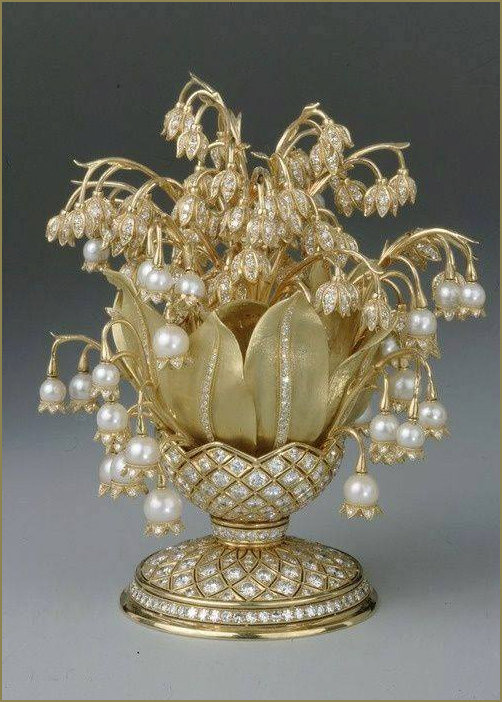
Another beautiful example of a vintage Fabergé egg made from gold, diamonds and pearls - source as yet unknown
Page updated : 1st April 2020 (G)